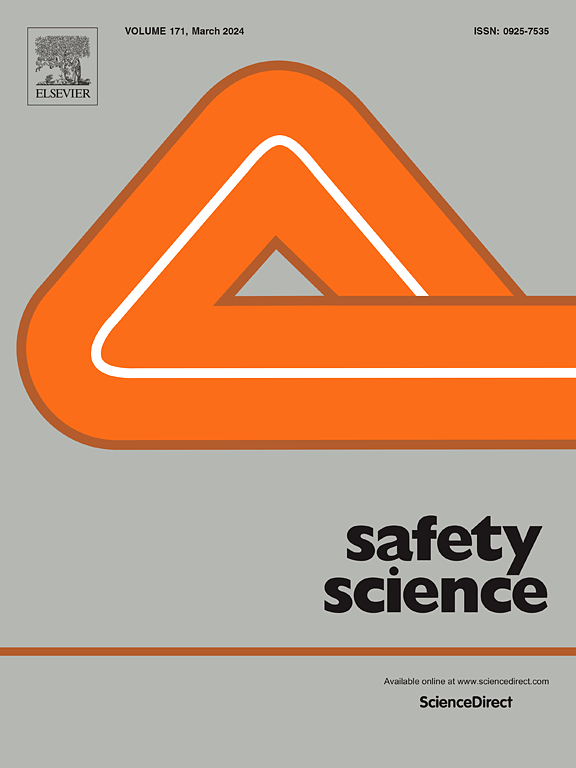Estimating the slip resistant quality of winter footwear using Artificial Intelligence
IF 4.7
1区 工程技术
Q1 ENGINEERING, INDUSTRIAL
引用次数: 0
Abstract
Slips and falls on ice are among the common causes of emergency department visits and hospitalizations during the winter season. These injuries are costly and can place a financial burden on healthcare systems and municipalities. Using slip resistant winter footwear is a key factor in reducing the risk of slips and eventually falls. In this study, we developed an Artificial Intelligence model that classifies high and low slip resistant footwear based on images of their outsoles. Our model was trained on a unique dataset which consisted of images of 266 winter footwear outsoles. This dataset included footwear outsoles made from rubber (n = 89), Arctic Grip (n = 101), and Green Diamond material (n = 76). The slip resistance of all footwear samples was tested and rated with a human-centered protocol called the Maximum Achievable Angle test. We applied a transfer learning technique to develop a 2D convolutional neural network to classify the outsoles as having high and low slip resistance. The best classification model used the Xception pre-trained model and obtained an accuracy and F1-score of 0.85 and 0.89, respectively. The AUC-ROC (Area Under the Curve for Receiver Operating Characteristic) was also 0.91. Our results suggest that the proposed model properly identified high and low slip resistant winter footwear outsoles. Our findings also confirmed that the footwear’s outsole tread pattern and material directly impact the footwear’s slip resistance quality. The proposed model will help footwear manufacturers to improve their workflow and increase product quality which can ultimately decrease the events of slips and falls.
利用人工智能估算冬季鞋类的防滑质量
冰上滑倒是冬季急诊室就诊和住院的常见原因之一。这些伤害代价高昂,会给医疗系统和市政当局带来沉重的经济负担。使用防滑的冬季鞋类是降低滑倒和最终跌倒风险的关键因素。在这项研究中,我们开发了一种人工智能模型,可根据外底图像对高防滑鞋和低防滑鞋进行分类。我们的模型是在一个独特的数据集上进行训练的,该数据集由 266 幅冬季鞋类外底图像组成。该数据集包括由橡胶(n = 89)、Arctic Grip(n = 101)和 Green Diamond 材料(n = 76)制成的鞋类外底。所有鞋类样本的防滑性都通过以人为本的最大可实现角度测试协议进行了测试和评级。我们应用迁移学习技术开发了一个二维卷积神经网络,将鞋底分为高防滑性和低防滑性。最佳分类模型使用了 Xception 预训练模型,准确率和 F1 分数分别为 0.85 和 0.89。AUC-ROC(接收器工作特性曲线下面积)也达到了 0.91。我们的结果表明,所提出的模型能正确识别高防滑和低防滑的冬季鞋类外底。我们的研究结果还证实,鞋类外底的胎面花纹和材料直接影响鞋类的防滑质量。所提出的模型将有助于鞋类制造商改进工作流程,提高产品质量,从而最终减少滑倒和跌倒事件的发生。
本文章由计算机程序翻译,如有差异,请以英文原文为准。
求助全文
约1分钟内获得全文
求助全文
来源期刊

Safety Science
管理科学-工程:工业
CiteScore
13.00
自引率
9.80%
发文量
335
审稿时长
53 days
期刊介绍:
Safety Science is multidisciplinary. Its contributors and its audience range from social scientists to engineers. The journal covers the physics and engineering of safety; its social, policy and organizational aspects; the assessment, management and communication of risks; the effectiveness of control and management techniques for safety; standardization, legislation, inspection, insurance, costing aspects, human behavior and safety and the like. Papers addressing the interfaces between technology, people and organizations are especially welcome.
 求助内容:
求助内容: 应助结果提醒方式:
应助结果提醒方式:


